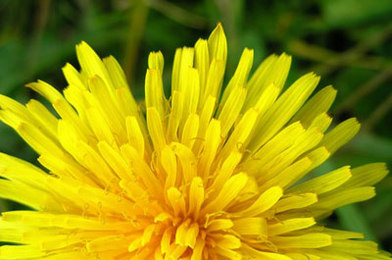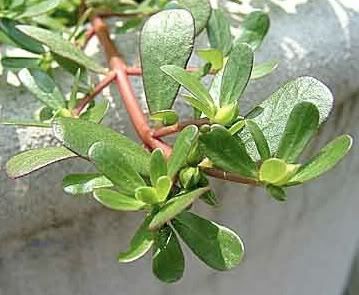- Joined
- Aug 9, 2007
- Messages
- 12,957
Anyone have any knowledge or know of any good resources for learning about the edible plants in the wild, particularly in the Utah/Rocky Mountain region? I started munching dandelions last year which are great and are actually a bit of a nutritional super food. Here's a an article from Yahoo Green about eating them.

Pity the American dandelion. In countries across the world the dandelion is considered a delicious vegetable and is consumed with affection -- and dandelion has been used for medicinal purposes for centuries. In America, it is most often cursed as an irksome weed and is pulled, poisoned, and otherwise generally maligned.
Fortunately, dandelions do have a small and very allegiant cadre of fans here in the states. Along with traditional eaters, a new group of green-market enthusiasts, plus those interested in foraging and wild greens ,are taking a shine to dandelions. And for good reason. They are delicious, and hugely healthy.
Nutritionally, dandelion greens and roots are chock full of vitamins, minerals, and antioxidants. They are one of the most nutritionally dense greens you can eat. Along with the punch of nutrition, they have many medicinal qualities as well. They are potassium-rich and have a strong diuretic quality, as well as efficacy as a blood detoxifier and good for the liver. They have long been used to treat digestive disorders and to treat arthritis and eczema.
Dandelion greens have a reputation for bitterness, but they are nicely so, and the bitterness is balanced by a lovely spiciness similar to arugula. Mature greens can get pretty bitter, but this can be tamed by blanching them.
The time to harvest dandelion greens is early in the spring, when they are their youngest and before they flower. They can be harvested again in late fall as they loose some of their bitterness after a frost. Look for young dandelions growing in rich, moist soil, making sure not to forage close to roads (they can accumulate pollution) or from areas that have been treated with garden chemicals. For a special treat, get out early in spring and look for the crown, which is the cluster of new buds that sits above the taproot. These are the tenderest, sweetest parts of the plant.
Young dandelion greens are tender and delicious served raw in salads or sandwiches. If you use the greens that have been harvested after the plant has flowered, you can blanch them in water to remove the bitterness; dump the bitter water, and blanch them again. You will loose a lot of vitamins this way, but there are still plenty of beneficial nutrients left. Use sauteed or steamed dandelion greens as you would any other greens. Dandelion root can by ground and used as a substitute for coffee, and dandelion flowers can be used in recipes and for garnish.
The French have a well-known soup called creme de pissenlits cream of dandelion soup, which is easy to make, as is Dandelion Syrup.
source: http://green.yahoo.com/blog/care2/334/eating-dandelions.html
Eating dandelions

Pity the American dandelion. In countries across the world the dandelion is considered a delicious vegetable and is consumed with affection -- and dandelion has been used for medicinal purposes for centuries. In America, it is most often cursed as an irksome weed and is pulled, poisoned, and otherwise generally maligned.
Fortunately, dandelions do have a small and very allegiant cadre of fans here in the states. Along with traditional eaters, a new group of green-market enthusiasts, plus those interested in foraging and wild greens ,are taking a shine to dandelions. And for good reason. They are delicious, and hugely healthy.
Nutritionally, dandelion greens and roots are chock full of vitamins, minerals, and antioxidants. They are one of the most nutritionally dense greens you can eat. Along with the punch of nutrition, they have many medicinal qualities as well. They are potassium-rich and have a strong diuretic quality, as well as efficacy as a blood detoxifier and good for the liver. They have long been used to treat digestive disorders and to treat arthritis and eczema.
Dandelion greens have a reputation for bitterness, but they are nicely so, and the bitterness is balanced by a lovely spiciness similar to arugula. Mature greens can get pretty bitter, but this can be tamed by blanching them.
The time to harvest dandelion greens is early in the spring, when they are their youngest and before they flower. They can be harvested again in late fall as they loose some of their bitterness after a frost. Look for young dandelions growing in rich, moist soil, making sure not to forage close to roads (they can accumulate pollution) or from areas that have been treated with garden chemicals. For a special treat, get out early in spring and look for the crown, which is the cluster of new buds that sits above the taproot. These are the tenderest, sweetest parts of the plant.
Young dandelion greens are tender and delicious served raw in salads or sandwiches. If you use the greens that have been harvested after the plant has flowered, you can blanch them in water to remove the bitterness; dump the bitter water, and blanch them again. You will loose a lot of vitamins this way, but there are still plenty of beneficial nutrients left. Use sauteed or steamed dandelion greens as you would any other greens. Dandelion root can by ground and used as a substitute for coffee, and dandelion flowers can be used in recipes and for garnish.
The French have a well-known soup called creme de pissenlits cream of dandelion soup, which is easy to make, as is Dandelion Syrup.
source: http://green.yahoo.com/blog/care2/334/eating-dandelions.html


